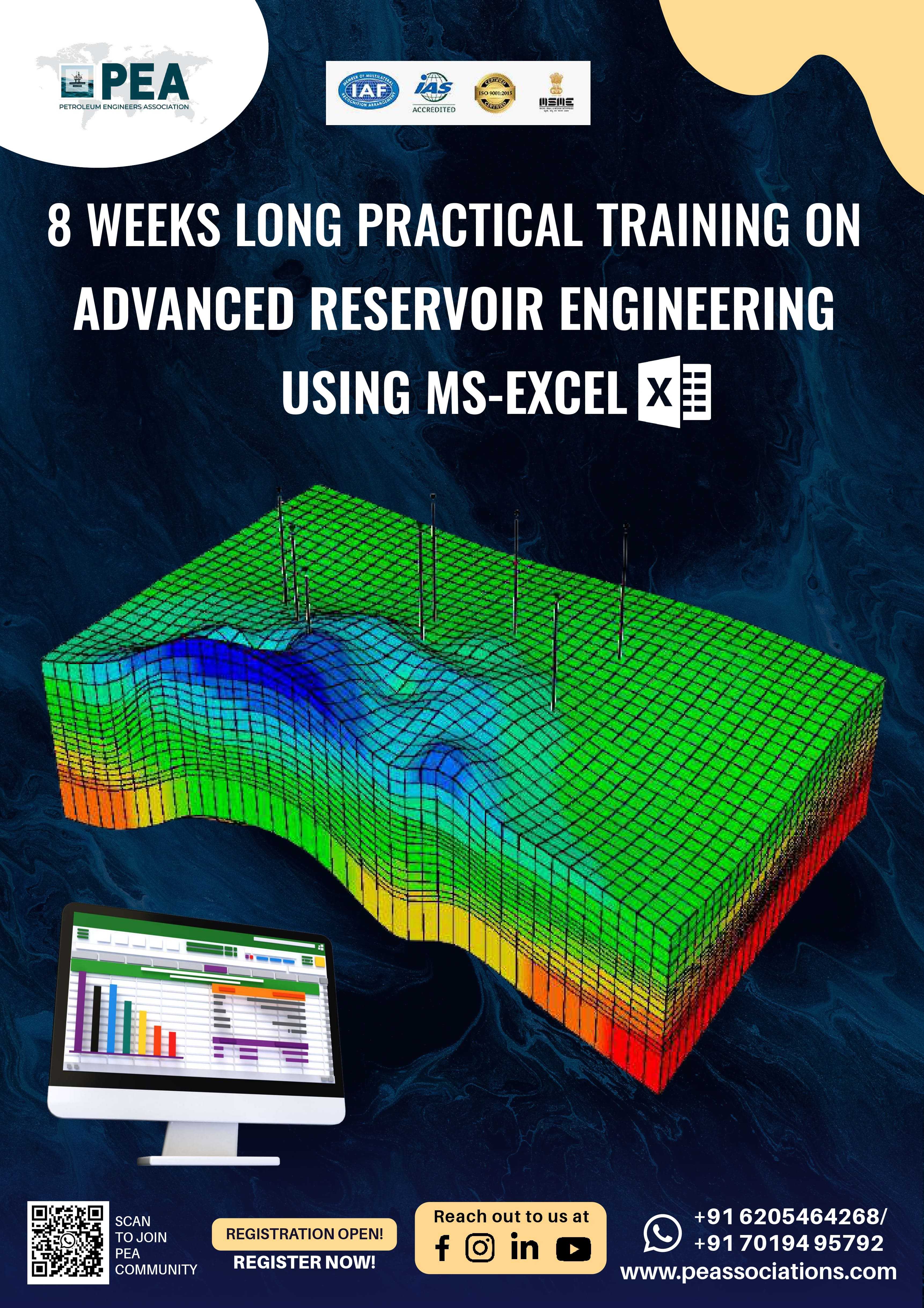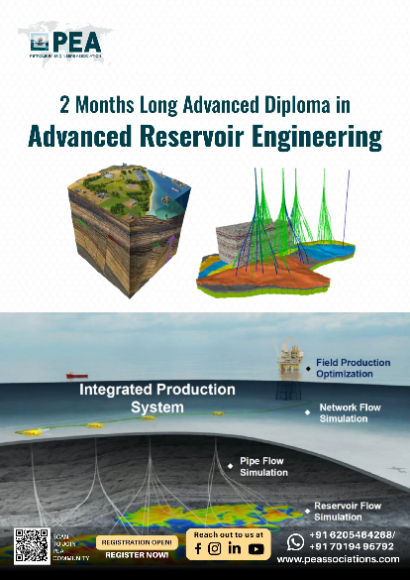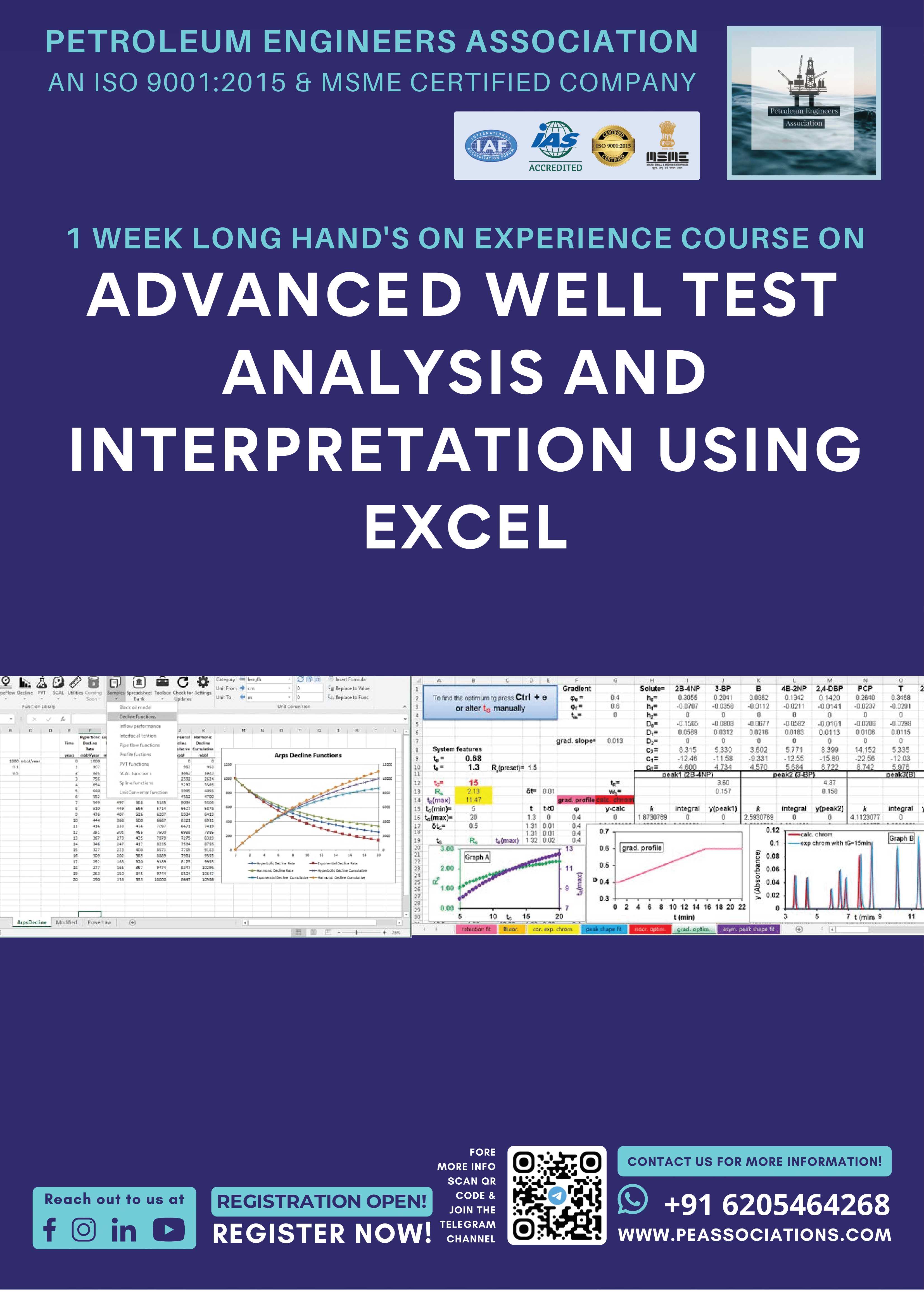Boost your team's skills and your budget! Enjoy group discounts for collaborative learning. Send an inquiry to info@peassociations.com.
Reservoir Engineering for Non-Reservoir Engineers
This practical course introduces essential reservoir engineering concepts to non-reservoir engineers, emphasizing hands-on learning through Excel-based calculations and data analysis. Participants will understand reservoir rock and fluid properties, reservoir drive mechanisms, reserve estimation, well performance, and enhanced oil recovery techniques—empowering effective collaboration and decision-making in petroleum projects.
Description
Designed for professionals working alongside reservoir engineers, this course empowers participants with foundational reservoir engineering skills using Excel spreadsheets exclusively. Avoiding complex software, it focuses on the principles and calculations for reservoir characterization, volumetric estimation, material balance, reservoir drives, well testing, and reservoir optimization through easy-to-follow Excel models and step-by-step exercises. The course fosters better cross-disciplinary communication, practical knowledge application, and strategic insight into reservoir management and production enhancement.
Reservoir engineering is critical in maximizing hydrocarbon extraction and ensuring economic efficiency in oil and gas operations. However, non-reservoir engineers often find the specialized software and technical jargon challenging. This course bridges that gap, offering accessible, Excel-based tools and knowledge for understanding reservoir behavior, estimating reserves, and evaluating production performance—equipping you to contribute effectively to asset development and management.
Provide a solid foundation in reservoir engineering principles suitable for non-specialists
Enable reservoir data analysis and calculations using Excel
Develop skills for estimating reserves, analyzing well performance, and predicting production
Understand reservoir drive mechanisms and enhanced oil recovery basics
Improve communication between disciplines through shared understanding of core concepts
Support informed decision-making in integrated petroleum projects
Interactive instructor-led sessions combining theory and Excel-based practical exercises
Step-by-step guided workbook and templates for calculations throughout the course
Group discussions and case studies to contextualize learning within real-world scenarios
Hands-on assignments to reinforce Excel skills aligned with reservoir engineering analyses
Q&A and troubleshooting sessions to adapt learning to participants’ backgrounds and questions
Increased capability among multi-disciplinary teams to understand reservoir data and analyses
Improved collaboration and communication between reservoir engineers and other professionals
Enhanced asset management decisions through practical reserve and production evaluation skills
Reduced dependency on specialized software, lowering training and operational costs
Strengthened reservoir surveillance and optimization practices
Empowerment with practical Excel skills applicable in day-to-day reservoir data analysis
Enhanced confidence to interpret and communicate reservoir engineering concepts
Broadened professional versatility and marketability in petroleum engineering projects
Improved problem-solving ability related to reservoir behavior and production forecasting
Production engineers, facilities engineers, geoscientists, asset team members, technical managers, and other professionals collaborating with reservoir engineers
Engineers transitioning into reservoir-related roles needing a practical foundation
Technical staff seeking to enhance understanding of reservoir principles without software complexity
Introduction to Reservoir Engineering
Fundamentals and role in petroleum projects
Overview of reservoir types—no software required
Reservoir Rock Properties
Porosity, permeability, wettability, capillary pressure
Excel-based data tabulation and trend analysis
Reservoir Fluid Properties
Oil, gas, water characteristics and PVT basics
Excel plotting of phase diagrams and formation volume factor calculations
Fluid Flow in Porous Media
Darcy’s Law applications and relative permeability concepts
Flow calculations performed in Excel
Volumetric Estimation & Reserve Calculations
Oil and gas initially in place (STOIIP, GIIP) calculations
Sensitivity analyses and probabilistic estimates in Excel
Reservoir Drive Mechanisms
Frequently Asked Questions
All course bookings made through PEA are strictly non-refundable. By registering for a course, you acknowledge and accept that all fees are payable in full and are not subject to refund under any circumstances, including changes in personal or professional commitments or partial attendance.
PEA reserves the right to make reasonable adjustments to course content, trainers, or schedules where necessary, without entitling delegates to a refund. Comprehensive details of each course — including objectives, target audience, and content — are clearly outlined before enrolment, and it is the responsibility of the delegate to ensure the course's suitability prior to booking.
For any inquiries related to cancellations or bookings, please contact our support team, who will be happy to assist you.





















